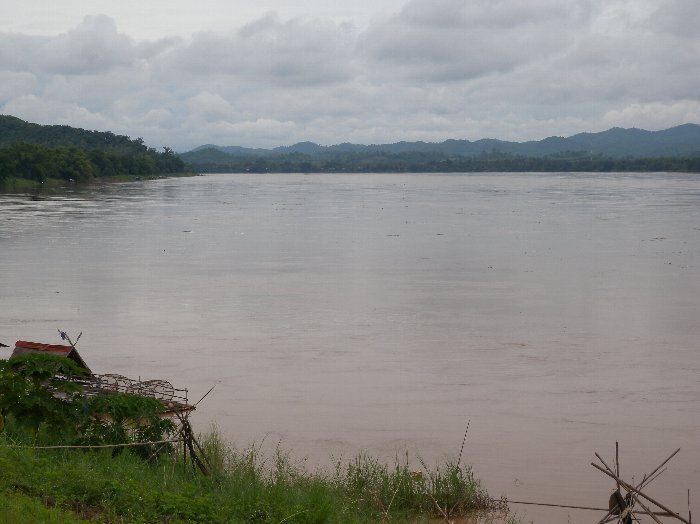 |
China / N Thailand.
High water in the Mekong at Chiang Khan, Loei prov. Thailand, at 16 August 2010
The plants on the river bed are dormant having small terete leaves.
photo Idei |
|
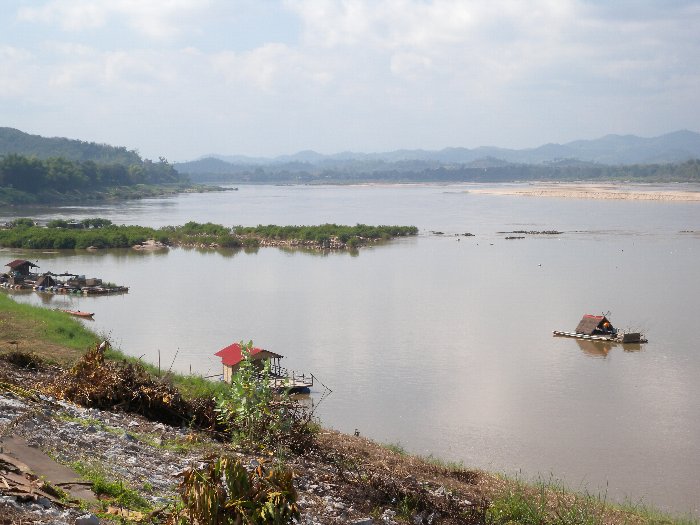 |
Low water at 9 January 2010 at same spot. The water may drop 10 meter. Note the transverse rocky ridge, not visible at high water.
photo Idei
|
|
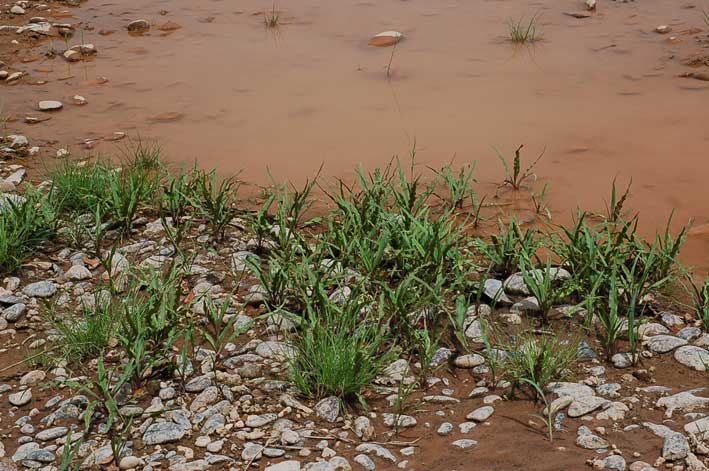 |
On sheltered places, between pebbles and rocks grow C. crispatula in several forms.Also C. loeiensis grows at such places.
photo Idei |
|
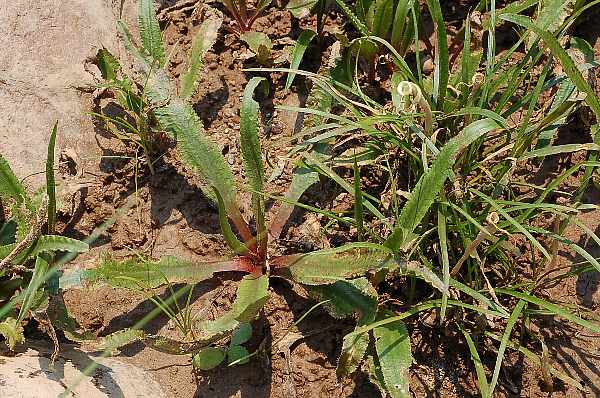 |
A broad leaved C. crispatula var. crispatula grows together with a narrow leaved one.
photo Idei
|
|
| |
|
|
|
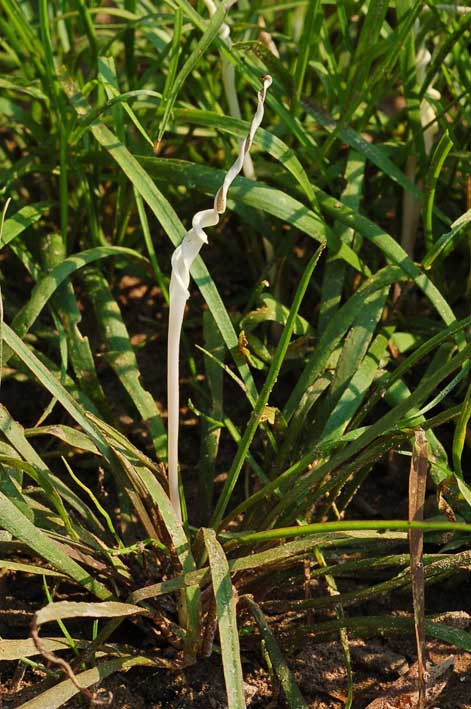 |
The narrow leaved C. crispatula var. crispatula with a white limb of the spathe.
coll. TMK-02A
photo Idei
|
|
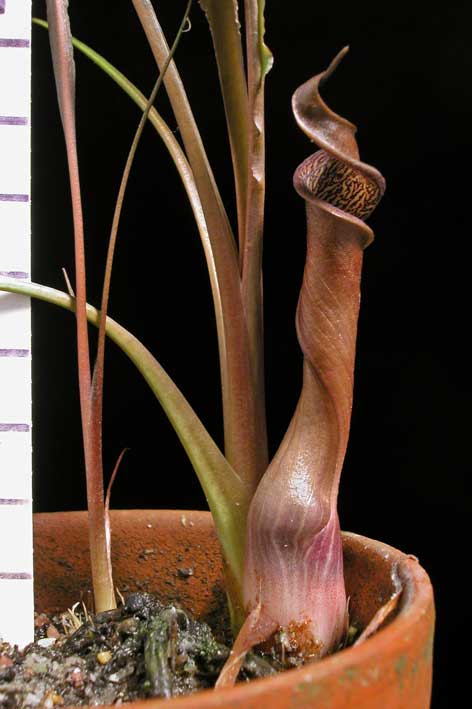 |
A cultivated 'broad leaved' C. crispatula var. crispatula. The spathe is short and thick. The limb may be more or less twisted, almost approaching these from C. crispatula var. yunnanensis.
coll. TMK 4309C, cult. B 1222 |
|
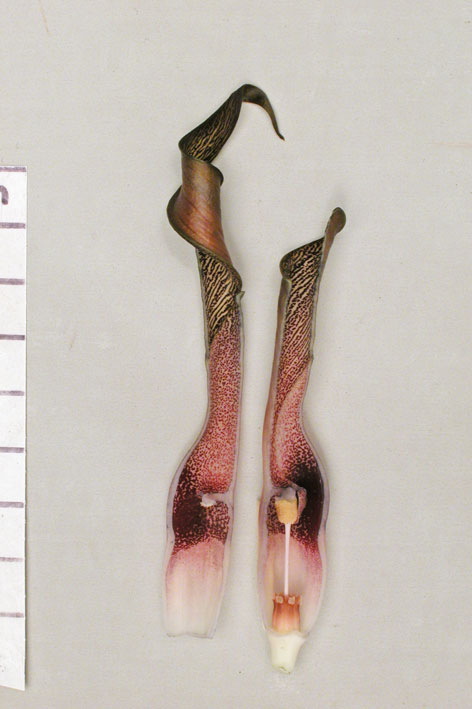 |
A longitudinal section of the spathe. The limb of the spathe is smooth, with the typical line pattern. The kettle has a transverse rim just over the male flowers.
coll. TMK 4309C, cult. B 1222
|
|
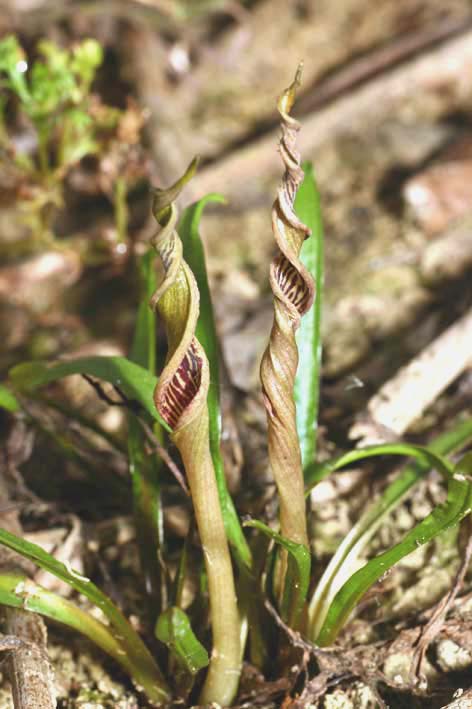 |
Zhou collected C. crispatula var. crispatula on the banks of the You river, W of Nanning, China
photo Zhou
|
|
| |
|
|
|
 |
Northern
Thailand
Emerged growing plants form a carpet over the rocks, firmly attached in cracks. Near Phitsanulok.
coll. NJT01-2
photo Jacobsen
|
|
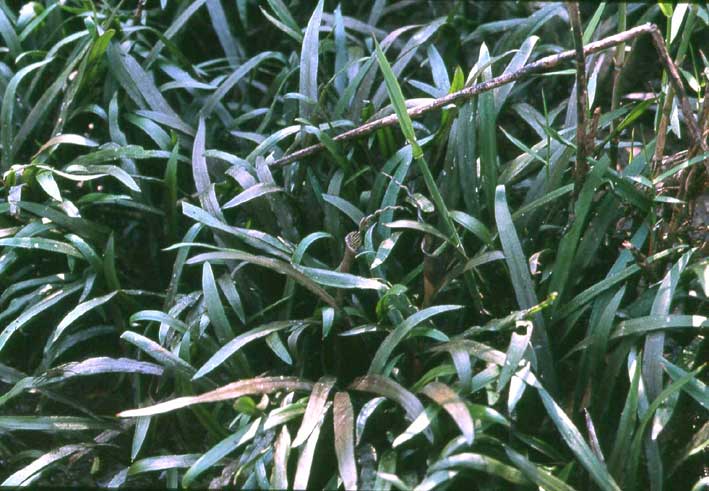 |
Close up of the leaves.
coll. NJT01-1
photo Jacobsen
|
|
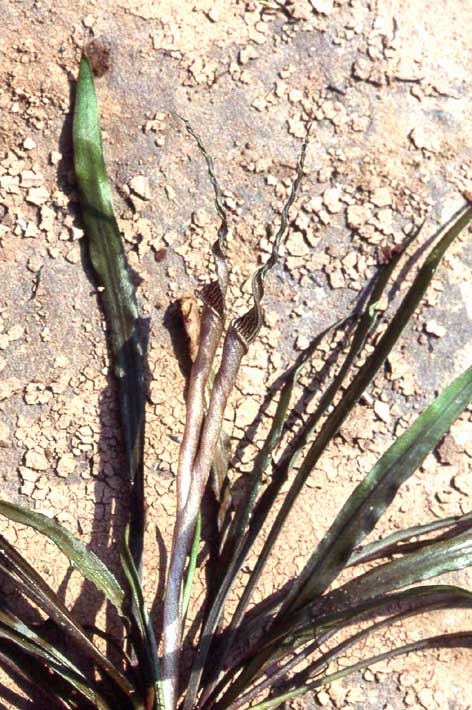 |
The spathe of the Phitsanulok plant with the typical line markings on the limb.
coll. NJT01-1
photo Jacobsen
|
|
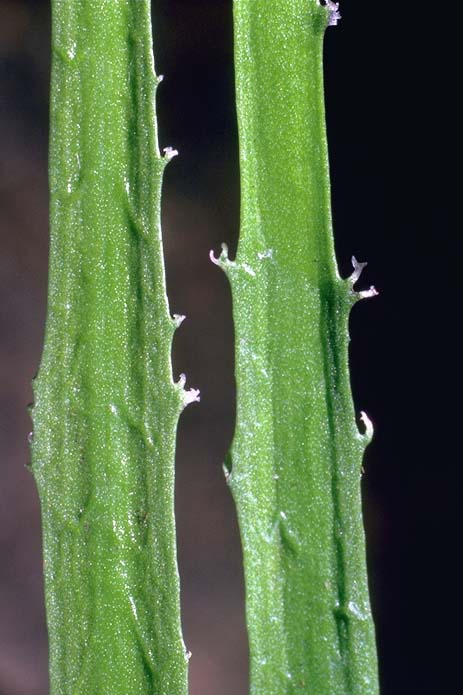 |
The leaves of C. crispatula var. crispatula may have a denticulate margin, seen in both the broad and narrow leaved forms.
coll. Tomey, cult. B 537-Wag 78372
|
|
| |
|
|
|
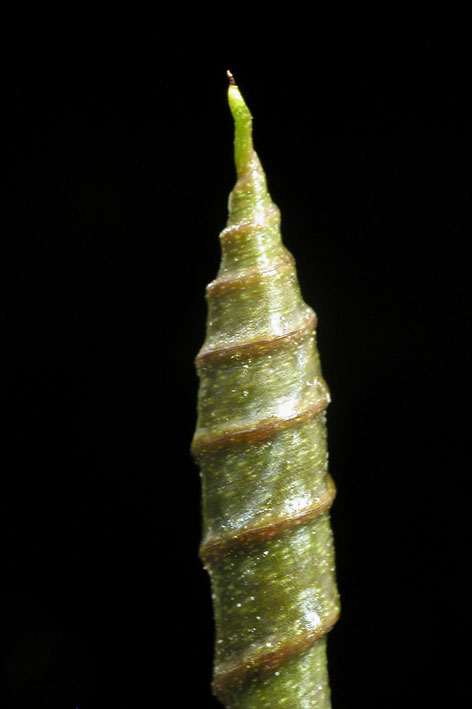 |
Central Thailand
A closely twisted limb of the spathe before opening.
coll. NJT 02-33, cult. B903
|
|
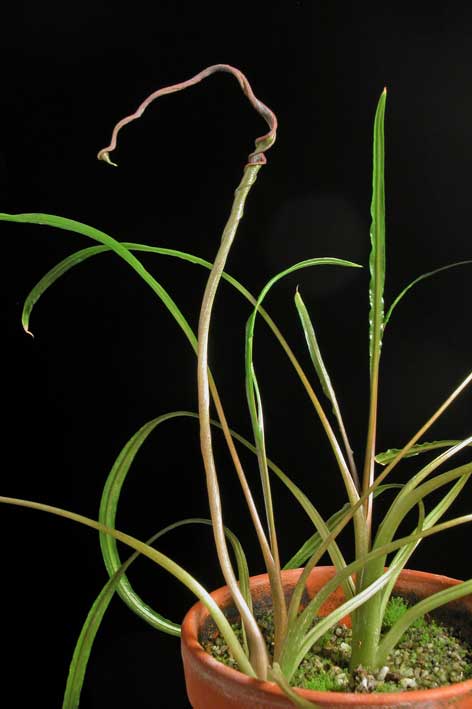 |
After opening. The plant originates from the Saraburi province.
coll. NJT 02-33, cult. B903
|
|
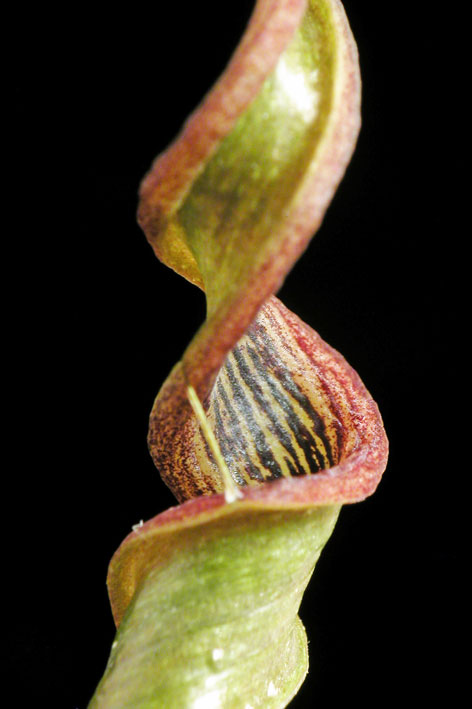 |
The limb with the line markings.
coll. NJT 02-33, cult. B903
|
|
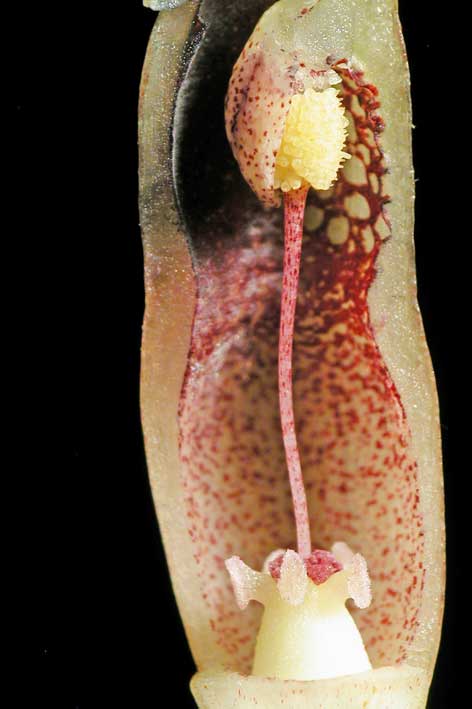 |
The opened kettle.
coll. NJT 02-33, cult. B903
|
|
| |
|
|
|
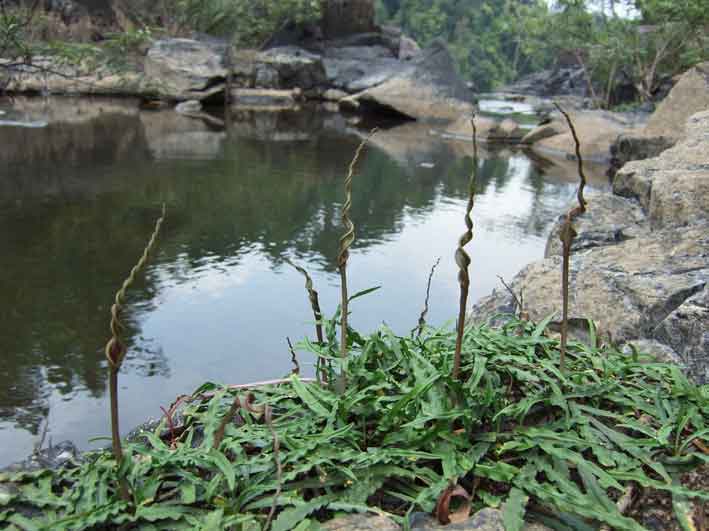 |
Central Thailand
C. crispatula var. crispatula growing emerged on the banks of Bang Pa Kong river in the Nakhon Nayok Province.
photo Sando
|
|
.jpg) |
The annual change in water level indicates that the plants will be fully submerged in the wet period.
photo Sando
|
|
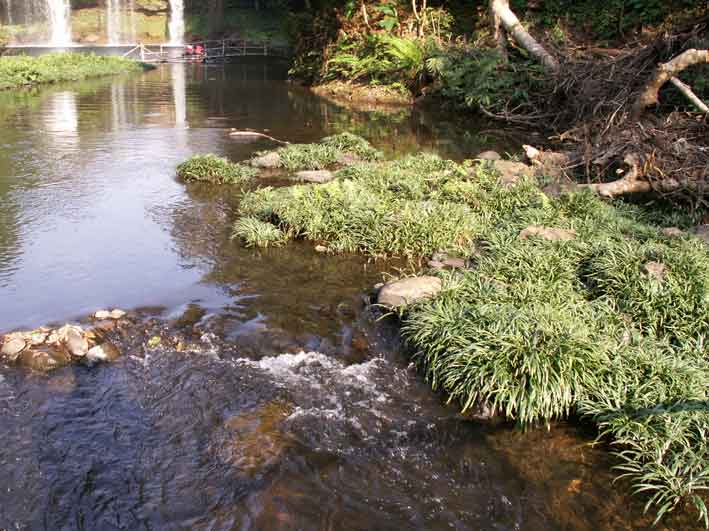 |
Laos
Patches of C. crispatula var. crispatula at Tat Champee in the Don Hua N.P. in Laos.
photo Schwott
|
|
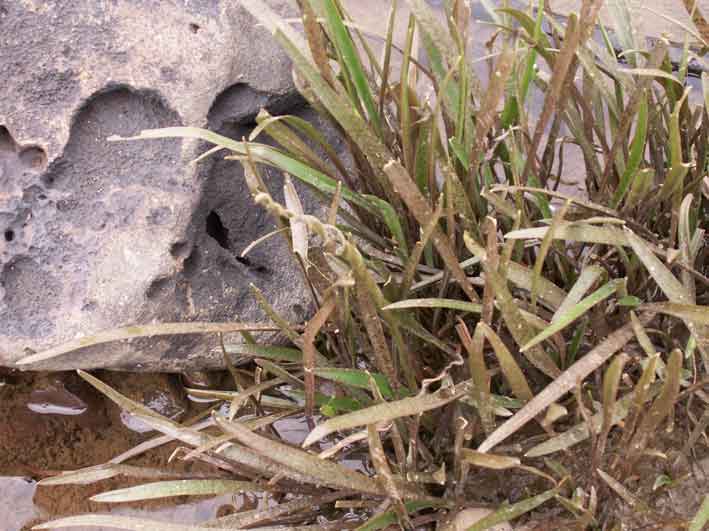 |
More C. crispatula var. crispatula is found at Tat Hua Khon, also from the Bolaven plateau in Laos.
photo Schwott
|
|
| |
|
|
|
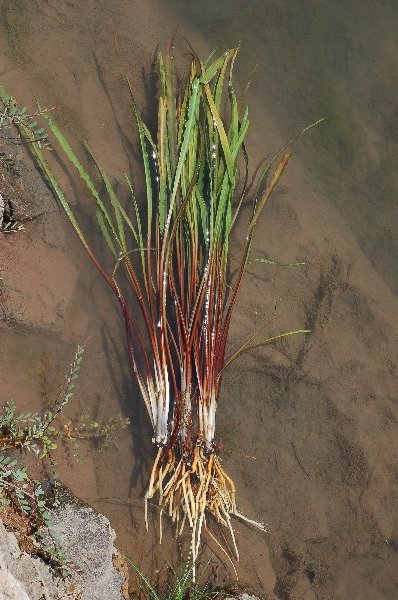 |
Laos
This C. crispatula var. crispatula from the '4000 islands' in S Laos has narrow, undulated leaves.
coll. LK 5542
photo Idei |
|
 |
In cultivation it doesn't have undulated margins. The long tube may indicate that it also flowers half submerged.
coll. LK 5602A, cult. B1272
|
|
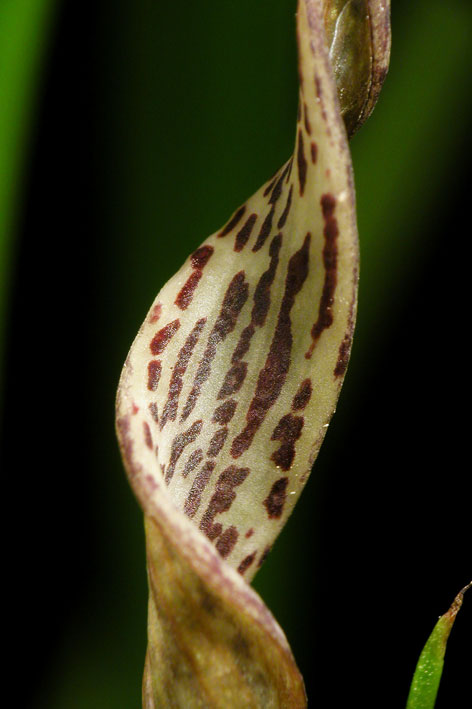 |
The typical line markings on the limb of the spathe.
coll. LK 5602A, cult. B1272 |
|
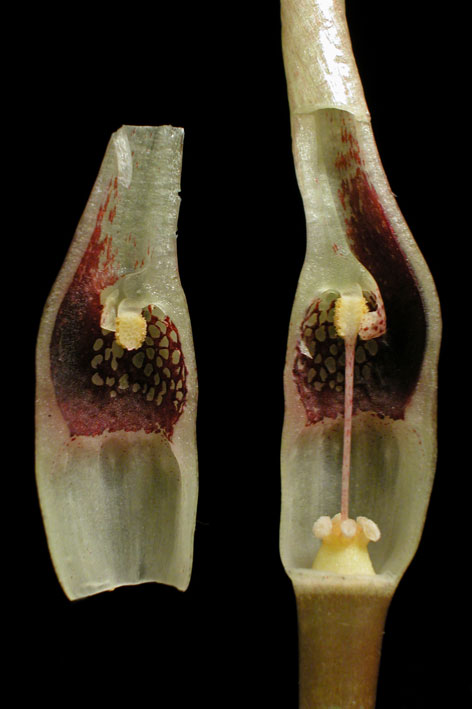 |
A longitudinal section of the kettle.
coll. LK 5601A, cult. B 1385
|
|
| |
|
|
|
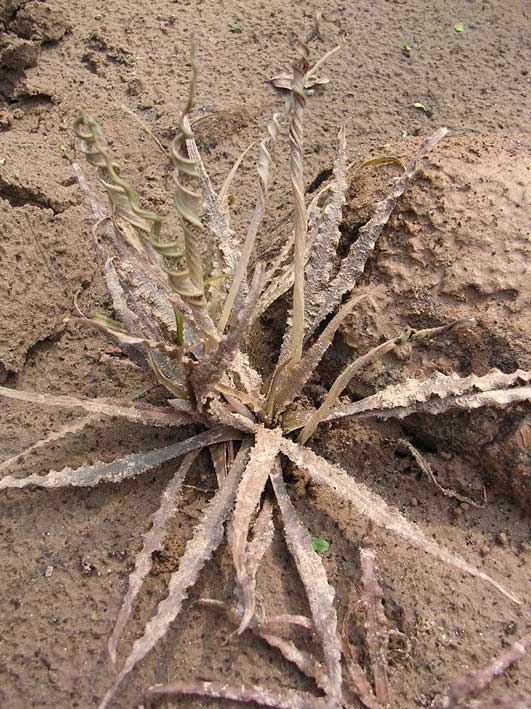 |
Cambodia
Maxwell collected C. crispatula var. crispatula along the Mekong near Kratie.
coll. Maxwell 06-811
photo Maxwell |
|
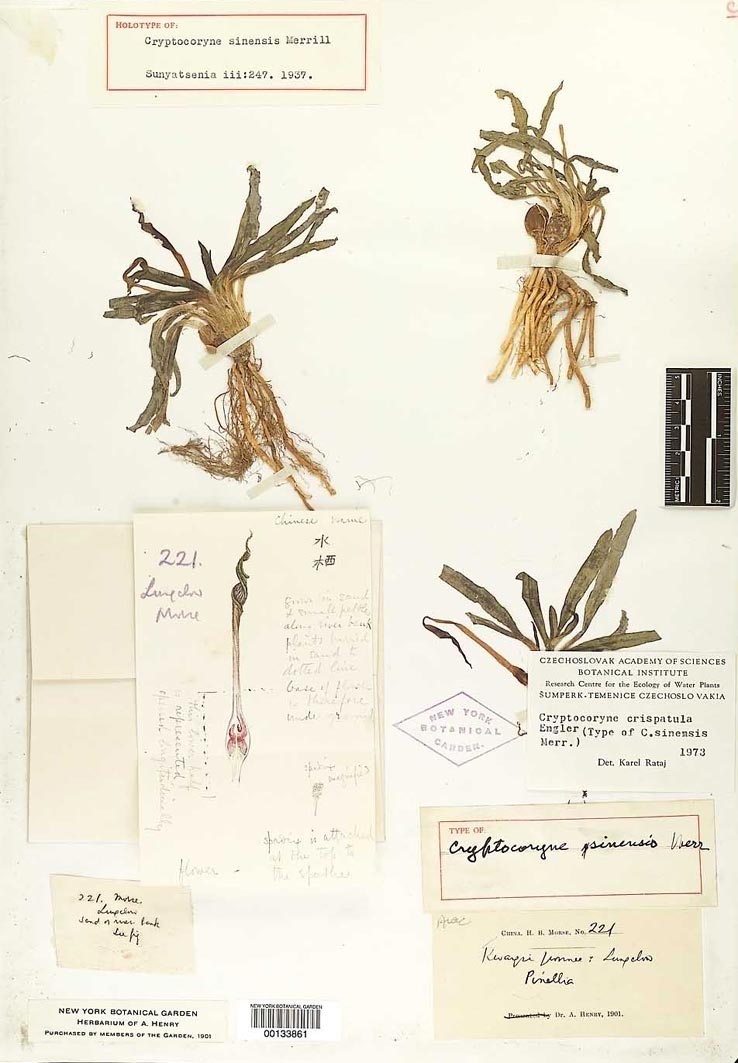 |
Ever described as the type for C. sinensis from the Kwansi province in China, it is now regarded as C. crispatula var. crispatula
coll. Morse 221
herbarium NY
|
|
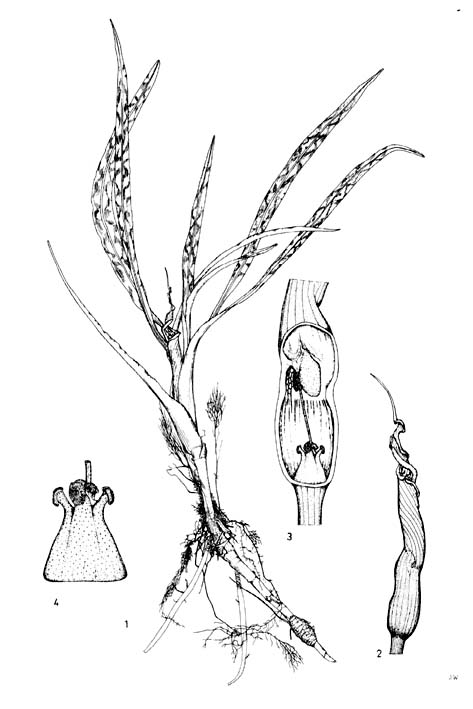 |
Drawing of the TYPE of C. crispatula var. crispatula in de Wit (1993).
Note the bulge in the rhizome, apparently from the past season where after the plant became covered with new soil. Note also the 'aerial' root.
after Balansa 2043, N Vietnam
drawing Juliet Williamson |
|
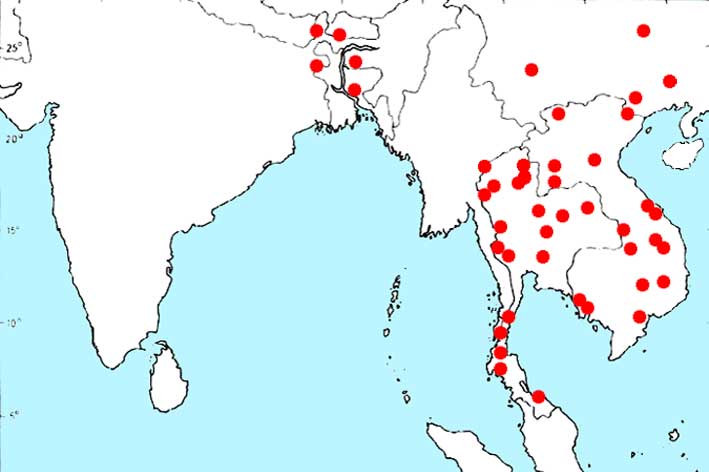 |
Distribution of C. crispatula var. crispatula.It is not certain if the E Indian / Bangla Desh plants should be better regarded as C. retrospiralis. Probably the plant is also common in S China, Myanmar and Cambodia.
|
|
| |
|
|
|
Cryptocoryne crispatula var. crispatula is not well suited for the normal aquarium.
In permanent emerged cultivation, the Mekong plants hold their seasonal character, starting growth in September and going down in June.
See the Crispatula group for an overview and for literature.
Updated July 2012 |
|